Contents
Entoloma bluish or pink plate is not included in any of the 4 classification groups and is considered inedible. The Entolomov family consists of more than 20 species, most of them have no nutritional value.
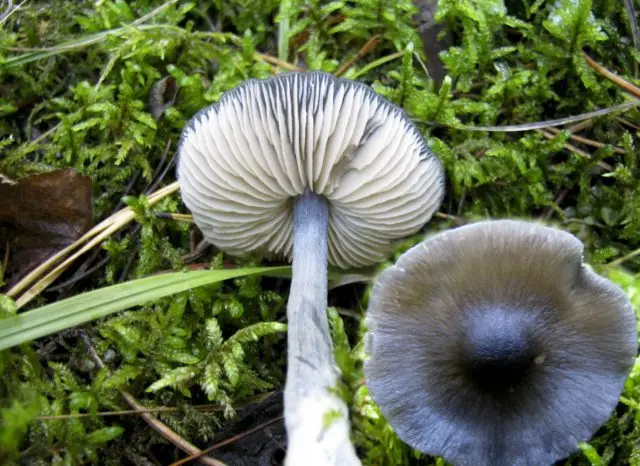
What does Entoloma bluish look like?
The color of the fruiting body of Entoloma bluish depends on the degree of illumination and the place of growth. May be light blue, gray with a blue tint. To varying degrees, the color blue is present, hence the name of the species.
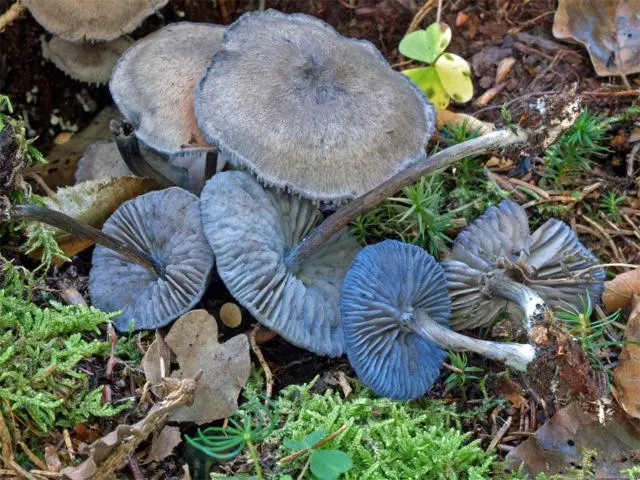
Cap Description
The rosovolastinnik is rather small in size, the average cap diameter is 8 mm in adult specimens. External characteristic:
- in young mushrooms, the shape is narrowly conical; as it grows, the cap fully opens;
- in the upper central part there is a bulge covered with small scales, less often concave in the form of a funnel;
- the surface is hygrophanous, with longitudinal radial stripes, glossy;
- edges lighter than the central part, uneven, curved, with protruding plates;
- spore-bearing plates are rare, wavy, of two types: short only along the edge of the cap, long – up to the stem with a clear border at the transition, the color is first dark blue, then pink.
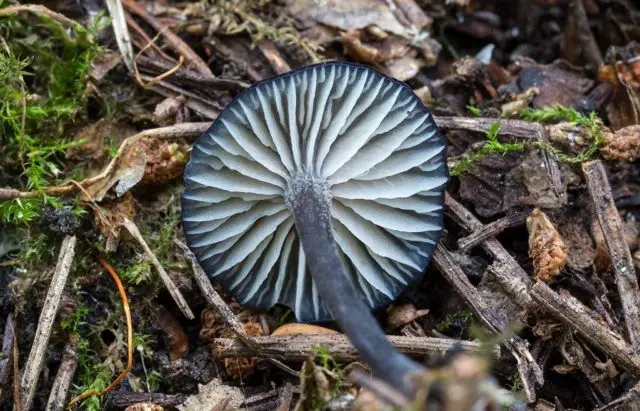
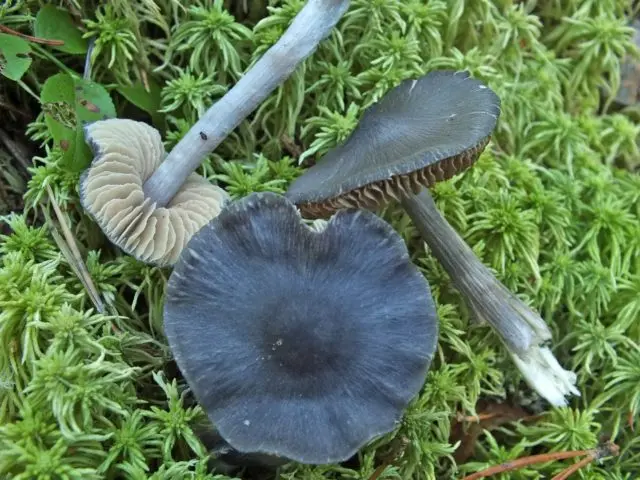
The pulp is fragile, thin, with a blue tint.
Description of the leg
The length of the leg is disproportionate in relation to the cap, grows up to 7 cm, thin – 1,5-2 mm. The shape is cylindrical, expanding towards the mycelium.

The surface is smooth, lined at the base, with a white edge. The color is gray with variations of blue or light blue. The structure is fibrous, rigid, dry, hollow.
Is the mushroom edible or not?
Due to its small size and exotic coloration, bluish Entoloma does not attract mushroom pickers. The species was also not of interest to biologists, so Entoloma cyanulum has not been fully studied. In the mycological reference book there is no description of Entoloma bluish, as a mushroom of nutritional value. It was classified as inedible, but without toxins in the chemical composition. Thin blue flesh with a lack of taste and a specific repulsive smell does not add bluish popularity to Entolome.
Where and how to grow
The main distribution of Entoloma bluish is Europe. In Our Country, this is a rare species, which can be found in the Central regions of Moscow and Tula, less often in the Central Chernozem part in the Lipetsk or Kursk regions. The pink-leaved plant grows in open, damp areas in the grass, on the mosses of peat bogs, in lowlands among reed thickets. Forms large groups from early to late September.
Twins and their differences
Outwardly, brightly colored Entoloma is similar to the pink plate, mushrooms belong to the same species.
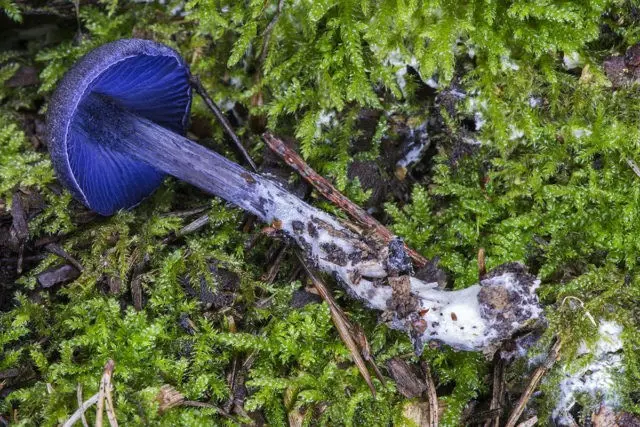
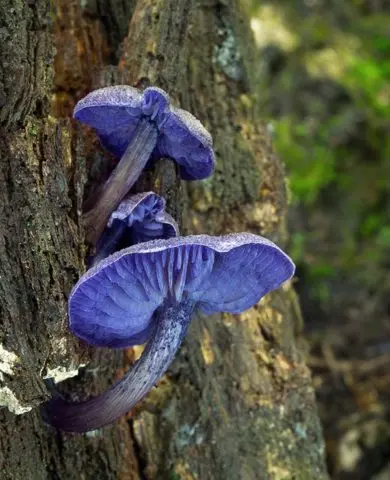
The double color of the hat differs: it is bright blue with a scaly surface, larger. The plates from the moment of growth to maturity are a shade lighter than the cap. The leg is shorter, thicker in width, plain. And the main difference is that the double grows on trees or deadwood. The smell is sharp, floral, the flesh is blue, the juice is viscous. The fruiting body is inedible.
Conclusion
Entoloma bluish is very rare. It grows in hard-to-reach places on the moist soil of peat bogs, among reed thickets or tall grass lowlands. The small, blue fungus forms colonies in early autumn. Refers to inedible.









